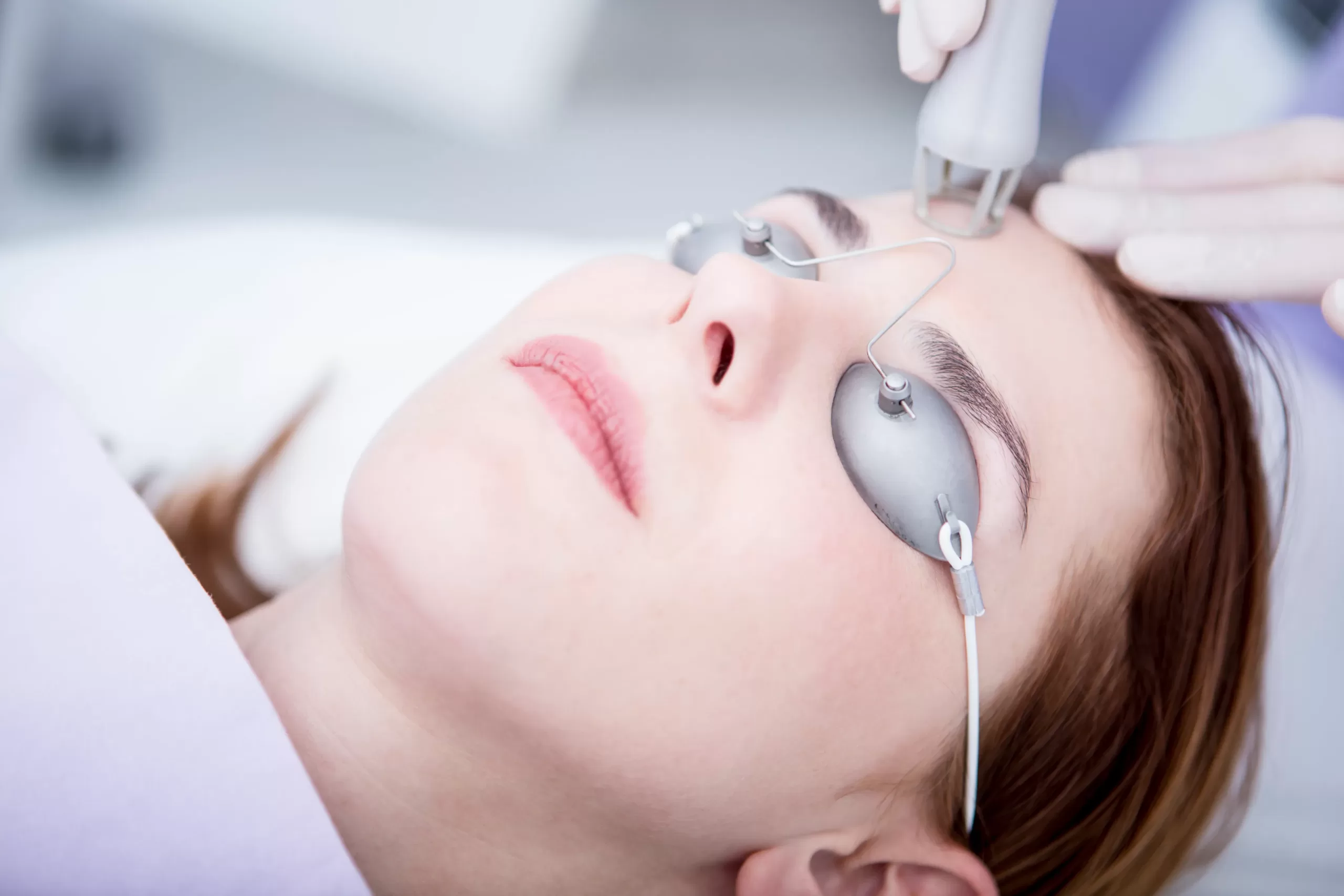Carbon dioxide lasers are increasingly utilized by dermatologists and plastic surgeons as part of skin resurfacing treatments, helping reduce fine lines and wrinkles while stimulating new cell growth.
CO2 laser resurfacing treatments may cause redness and swelling at the site of treatment, so it’s essential that our post-treatment guidelines be strictly adhered to for the best possible healing of skin tissue.
What is a CO2 Laser?
CO2 lasers are continuous-wave lights emitting near-infrared wavelengths. Their ability to pass through atmospheric layers and be easily absorbed by various materials, including living tissue such as skin, makes them powerful tools for surgical cutting and engraving procedures.
As the CO2 laser beam passes through the atmosphere, its energy is absorbed by oxygen and nitrogen molecules in the air and passed on to CO2 molecules that then become ionized and excited, producing heat which travels down through its surface and onto skin, either burning it off completely or creating deep scars on it.
Carbon dioxide lasers are very efficient at heating tissue, and this ability also enables them to remove thin layers of skin through what’s known as a carbon dioxide laser peel. This treatment is popularly used against acne scarring, wrinkles and sun spots.
CO2 laser resurfacing can be an effective treatment option for acne scarring, but it may not be suitable for all skin types. CO2 laser treatments tend to work best on Fitzpatrick type 1 or 2 skin, which has lower melanocyte counts and therefore is less likely to result in hyperpigmentation after treatment. Nonablative CO2 treatments may provide more beneficial results on darker complexions.
What are the Benefits of a CO2 Laser?
CO2 lasers are ideal surgical lasers for cutting soft tissue and hemostasis due to producing light with wavelengths that are strongly absorbed by water molecules within living cells. As the laser beam passes through tissue it heats these water molecules until they vaporize – immediately cauterizing any surrounding tissue while also decreasing bleeding time for faster surgery time.
Photocoagulation is a process that uses light waves to contract and shrink small blood vessels, thus decreasing the amount of blood lost during surgery and post-op recovery. This effect can also help prevent cancer cells from spreading further throughout the body, especially beneficial when treating precancerous lesions that could become precancerous in later years.
CO2 lasers can also be used for skin resurfacing, which is commonly recommended to those suffering from significant sun damage, deep lines and wrinkles, hyperpigmentation or superficial scarring. While CO2 lasers offer safe treatment solutions for many individuals, this option usually is not appropriate for treating active acne, rosacea or eczema cases.
CO2 lasers are widely utilized for engraving materials like metals, plastics and wood. Their precise laser beam can be quickly directed with highly accurate servo motors for industrial applications.
What are the Side Effects of a CO2 Laser?
Carbon dioxide lasers produce energy at wavelengths readily absorbed by water molecules, which makes it possible to perform surgery on soft tissues using CO2. When the moisture in living tissue absorbs this energy, controlled thermal damage to tissues occurs through ablation – also known as ablation.
CO2 laser resurfacing procedures often produce redness and pain. This can be reduced with topical ointments or medication taken prior to and post procedure, and eventually fade as new skin forms in its place. While recovering, it is vitally important to avoid the sun by wearing broad spectrum sunscreen daily – exposure could result in hyperpigmentation which bleaching creams can help address.
Petechiae are rare but more serious side effects of CO2 laser treatments; caused by heat generated during ablation processes and can be minimized by choosing lower power settings.
CO2 laser treatment can improve a wide range of cosmetic conditions. It tightens sagging skin, smooths fine lines and wrinkles, reduces scarring and can improve pigmentation. Fitzpatrick skin types I-II typically respond well to this form of laser resurfacing while those with darker skin may be more prone to complications when combined with non-ablative lasers such as the erbium-doped yttrium-aluminum-garnet laser.
How is a CO2 Laser Used?
CO2 lasers utilize a gas mixture consisting of carbon dioxide, nitrogen and helium as the active laser medium. When an electric field is applied to this mixture, molecules become excited, increasing rotational and vibrational energies. When photons of appropriate wavelength (mid-infrared) come into contact with these excited molecules they release their energy by emitting photons via stimulated emission; this causes other nearby molecules to release photons as well, producing an avalanche effect that produces laser beams.
Due to this process, CO2 lasers can produce very high power levels at an affordable cost, making them suitable for a range of industrial uses such as cutting and welding as well as medical procedures that treat skin conditions or cauterize blood vessels.
CO2 lasers stand out as one of the key characteristics of modern medicine for their ability to cut through living tissue quickly and precisely, due to the energy generated by its wavelength being readily absorbed by water molecules within cells in our bodies. When directed towards living tissue, this energy can heat up cells until water vapourizes immediately cauterizing an area and preventing bleeding – making CO2 lasers an excellent way of safely and precisely cutting tissue without using traditional scalpels.
Disclaimer: The content on this blog is intended for general informational purposes only. It is not a substitute for professional medical advice, diagnosis, or treatment. Always consult qualified healthcare providers for personalized advice. Information regarding plastic surgery, dental treatment, hair transplant, and other medical procedures is educational and not a guarantee of results. We do not assume liability for actions taken based on blog content. Medical knowledge evolves; verify information and consult professionals. External links do not imply endorsement. By using this blog, you agree to these terms.










